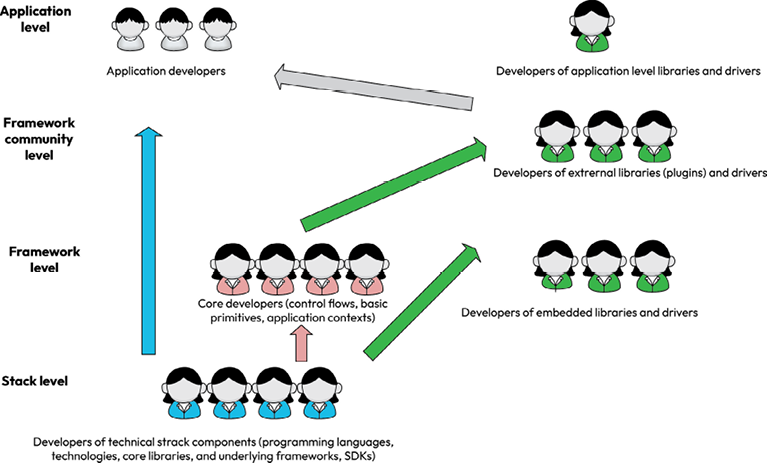General tasks of framework architecture
Much like software architecture in general, the architecture of a framework is responsible for defining clear boundaries and ensuring effective communication within developer communities. A well-structured framework architecture allows different groups of developers – those building the framework itself, those extending it, and those using it – to work together efficiently.
A framework does not exist in isolation. It operates within a broader ecosystem that consists of four key levels (see Figure 5.1), each playing a distinct role in the life cycle of the framework. Understanding these levels is crucial for designing architectures that are both extensible and maintainable.

Figure 5.1: Communication architecture around a framework
Core principles are modularity, extensibility, maintainability, and scalability:
- Modularity: Design the framework as a collection of independent components or modules with minimal...

































































